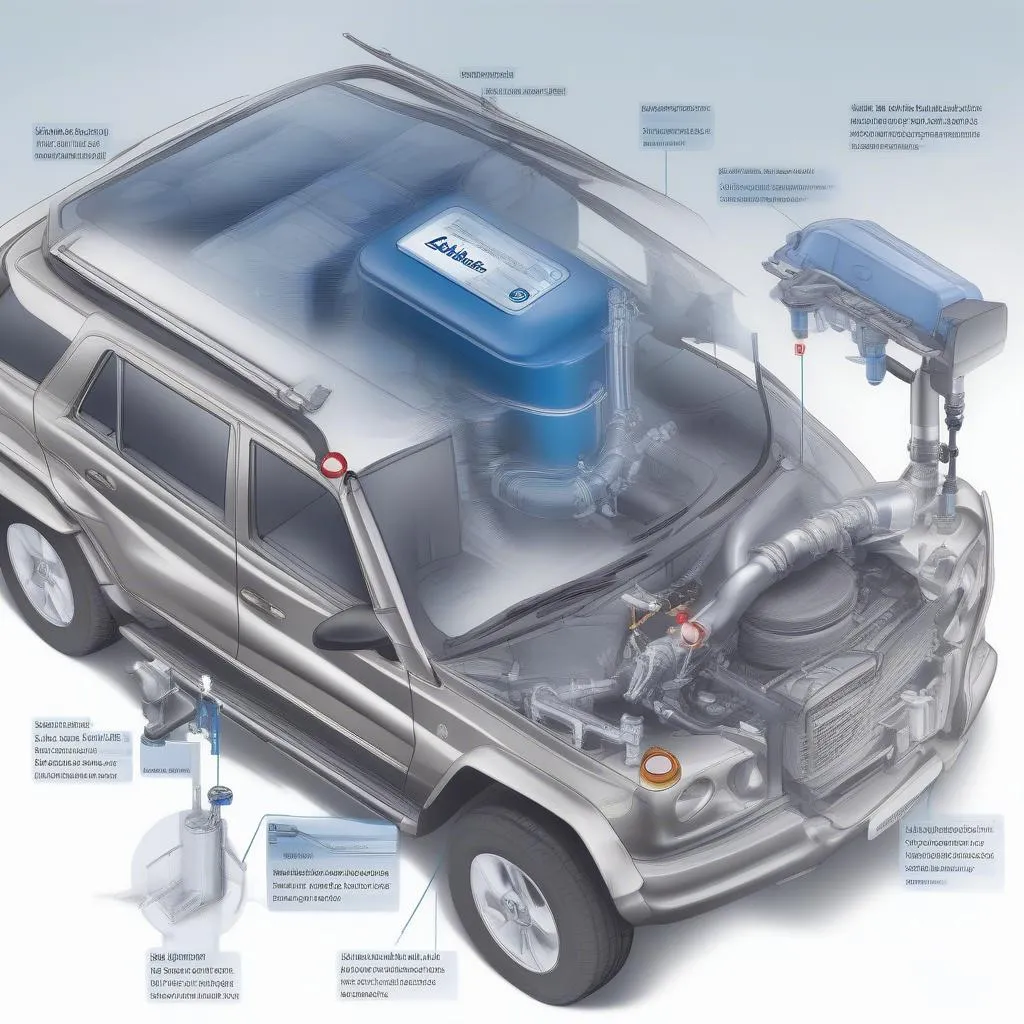Your car’s brake system is essential for your safety on the road. It’s vital to address any warning signs, especially if your brake pad warning light comes on. This light signifies a potential problem with your brake pads and should be taken seriously. In this guide, we’ll explore what causes this light to illuminate, what it means, and how to fix it.
Why Your Brake Pad Warning Light Comes On
The brake pad warning light is a crucial indicator of brake pad wear. When your brake pads become excessively thin, they may wear down to a point where they can’t effectively stop your vehicle. This light activates when the sensor attached to the brake pad reaches a predetermined wear threshold.
What To Do When Your Brake Pad Warning Light Turns On
If your brake pad warning light illuminates, don’t ignore it. Instead, take immediate action. Here’s what you should do:
- Don’t Panic: The light serves as a warning, and you still have some braking capacity. However, you should address it promptly.
- Schedule an Inspection: The safest course of action is to take your car to a trusted mechanic for a brake inspection. This allows them to assess the severity of the wear and determine if the brake pads need replacement.
- Don’t Delay: Prolonging the issue can lead to more serious problems. Delaying a brake pad replacement may damage your rotors or other parts of your braking system.
How To Tell If Your Brake Pads Are Worn
While the warning light is a good indicator, you can also look for other signs of worn brake pads:
- Squealing or Grinding Noise: When your brake pads are worn down, they can scrape against the rotors, producing a high-pitched squeal or grinding sound.
- Vibrating Brake Pedal: If you notice a vibration in your brake pedal when you apply the brakes, it could be a sign of uneven brake pad wear.
- Longer Braking Distance: If you notice it takes longer for your car to stop, it could indicate that your brake pads are worn down.
Can You Reset the Brake Pad Warning Light Yourself?
Many car owners wonder if they can reset the brake pad warning light themselves. It’s possible, but it varies depending on your car model and year. It’s crucial to consult your car’s owner’s manual or a trusted repair manual to ensure you’re following the proper steps.
- For some vehicles, you can reset the light by using a scan tool. This allows you to access the vehicle’s computer system and reset the warning light.
- Other vehicles may require a specific procedure involving the brake pedal or ignition cycle.
Cost of Brake Pad Replacement
The cost of brake pad replacement can vary depending on factors like the type of brake pads, the vehicle model, and the labor costs in your area.
- Here’s a general estimate: You can expect to pay between $150 to $400 for a complete brake pad replacement on both front and rear axles.
What If You Have a Brake Pad Warning Light But Your Pads Seem Fine?
It’s possible that your brake pad warning light comes on, but the pads appear to have plenty of material left. This could be due to several factors:
- Faulty Brake Pad Sensor: The sensor that triggers the warning light could be malfunctioning.
- Incorrect Sensor Installation: The sensor could have been installed incorrectly during a previous brake job.
- Electrical Issue: There could be a problem with the wiring or the electrical connection to the sensor.
In these cases, it’s advisable to consult a professional mechanic to diagnose the problem and ensure the brake system is functioning correctly.
Importance of Regular Brake Maintenance
To ensure your brake system is in good condition and prevent costly repairs, it’s important to have regular brake maintenance:
- Inspect Your Brakes: Have your brakes inspected every six months or 5,000 miles, whichever comes first.
- Replace Brake Pads: Follow the manufacturer’s recommendations for brake pad replacement intervals.
- Check for Leaks: Inspect the brake lines for any leaks or signs of damage.
- Flush Your Brake Fluid: Brake fluid absorbs moisture over time, which can affect its performance. Have your brake fluid flushed every two years or 24,000 miles.
Brake Pad Warning Light: Frequently Asked Questions
What Happens If I Ignore a Brake Pad Warning Light?
Ignoring a brake pad warning light can be dangerous. It can lead to a loss of braking power, resulting in an accident. Additionally, worn-down brake pads can damage your brake rotors, potentially requiring costly repairs.
How Often Should I Replace My Brake Pads?
The frequency of brake pad replacement varies depending on your driving habits, the type of vehicle, and the quality of the brake pads. However, most brake pads need replacement every 25,000 to 50,000 miles.
How Can I Prolong the Life of My Brake Pads?
You can prolong the life of your brake pads by practicing good driving habits. These include:
- Avoiding Harsh Braking: Sudden braking puts excessive wear on your brake pads.
- Anticipating Stops: Look ahead and anticipate upcoming stops to avoid abrupt braking.
- Maintaining Speed: Avoid driving too fast, as this increases the wear on your brakes.
- Keeping a Safe Distance: Maintaining a safe distance from other vehicles allows you to brake more smoothly.
Conclusion
A brake pad warning light is a serious indicator of potential brake system issues. It’s crucial to take it seriously and have your brakes inspected promptly. Maintaining your brakes through regular inspections and replacements can ensure your safety on the road and help you avoid costly repairs.

